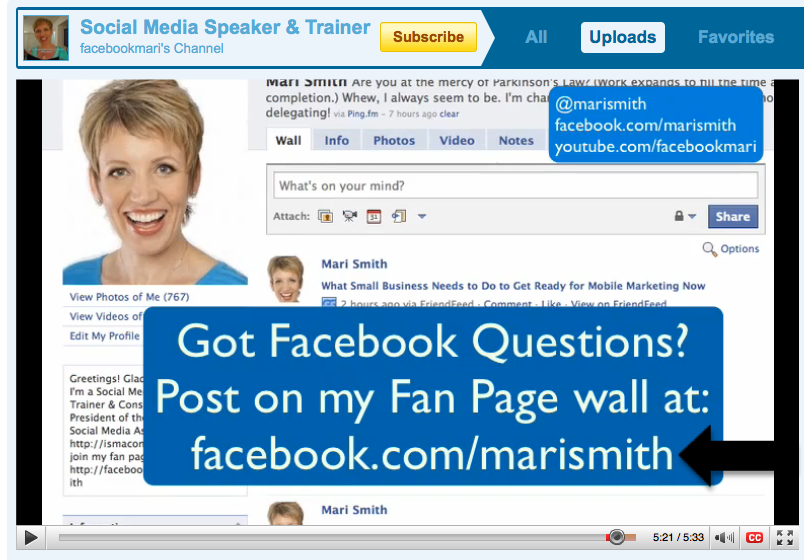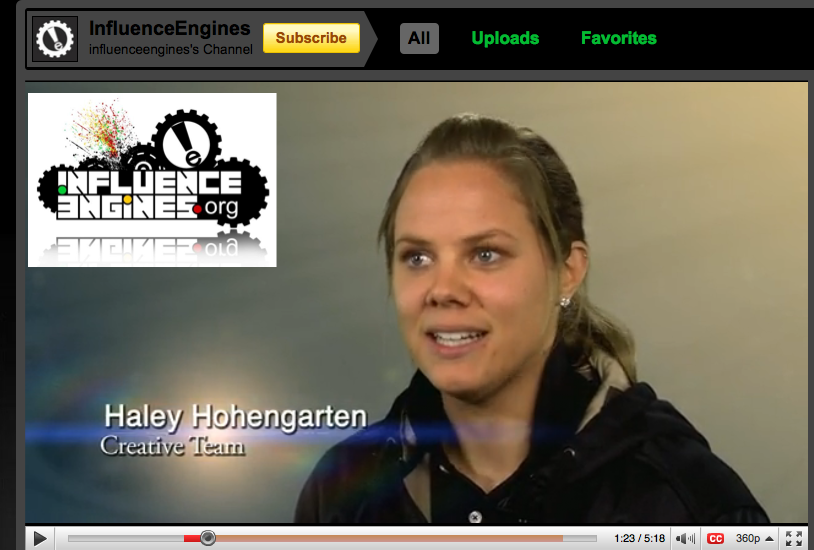From Amy Porterfield/Social Media Examiner
There’s no doubt that online video marketing is on the rise. Numerous studies and statistics prove that video works. In fact, Forrester Research found that videos were 50 times more likely to receive an organic first page ranking than traditional text pages. That’s a pretty impressive stat! Online video marketing is attractive to many businesses today for numerous reasons. Making videos and posting them online is fairly inexpensive. Plus, online videos stay online forever. If you spend the money to record once, your video could still be getting views a year from now.
In addition, social media sites and video go hand in hand and most sites encourage video posting and sharing. The viral video opportunities are endless when you use the right strategies to create and post your videos online.
If you’re new to video, or have been thinking about flipping on your camera for the first time, here are some tips and strategies to get you going.
Six Quick Tips to Optimize Your Videos
Once you record your video, follow these tips to make sure it reaches your core audience and gets the views it deserves.
#1: Make your title count
Just like a headline to a blog post, video titles can pull powerful traffic. There are two main reasons why the title is so important. One, a great title can instantly grab a viewer’s attention. Two, when you use the appropriate keywords in your title, you are more likely to show up on search engines when people are searching for your topic. And remember Google owns YouTube, so there’s a story connection between video and searching.
#2: Provide excellent content
Take some time to think about your ideal viewer. What do you know that they’ll find valuable? What can you teach them? “How-to” videos are extremely successful because not only do they offer great value to your viewer, but also you’re able to showcase your knowledge and skill, thus positioning yourself as an expert. This is key as you continue to grow your brand.
Also, no matter how good your content is, it won’t matter if your video is too long and you lose your viewer’s attention. Try to keep them short.
In late 2009, ComScore reported that the average video was 3.8 minutes in length. #3: Include your URL in your video
When you edit your video, take advantage of the different editing features. One easy feature is to add a text box to your video. This is where you can display your website address and it’s a great way to get exposure.
Here’s a screen shot of Mari Smith’s YouTube channel. Notice how she used a text box in her video to display key information, including her website URL at the end of her video. Smart move!
#4: Take advantage of video’s branding opportunities
For branding purposes, have your company logo displayed prominently somewhere on the screen. You can do this at all times, or during key times in your video.
In the image below, notice how the company logo is displayed in the upper-left corner. You can display your logo throughout your video or only at key times.
#5: Always provide an HTML link
When you post on YouTube, you have the option to write a short description of your video. Always start with the link you want to drive your viewers to so you don’t miss this key opportunity.
Here’s a snapshot of the description boxes from one of my YouTube videos. Notice the placement of my website URL (it’s the first thing you want to put in the box!) and the keywords I used in my title as well as the description.
#6: Go beyond YouTube
Most people post their videos on YouTube. In addition to this, make sure to always embed your video on your own website. This will increase the amount of time people spend on your website and help grow a captive audience.
Also, Google’s algorithms consider how many times a video is viewed, and embedded video views you receive get added to the ‘views’ tally on YouTube. This is important for showing up in Google search results!
How to Supercharge Your Videos
To make sure your video stands out above all the clutter on the web, here are a few strategies that will give your videos an extra boost.
- Create a Campaign: To get noticed, think beyond stand-alone videos. For greater reach and exposure, create a series of content-rich videos that you publish regularly. Not only will this create a great synergy around your content, but it will also allow you to build upon your brand identity as each video is released.
- Always Include a Call to Action: Never miss the opportunity to ask your viewers to take some type of action at the end of your video. You can ask them to sign up for your newsletter, go to a specific website, leave a comment about your video or visit your blog. If your video is good, you’ll likely have their full attention; make sure to take advantage of it!
- Don’t Make a Sales Pitch: There is a lot of sales clutter on the web and you want to make sure you come out above this. There is nothing wrong with selling your products or services, but use your video to define a problem, discuss solutions and support others—when you combine the three, your video will attract the right following.
 a bit of an apples vs. oranges comparison because YuMe's much larger network includes many different types of video content (vs. Rhythm's TV program only) and the ads YuMe surveyed were a mix of 15-second and 30-second spots (vs. Rhythm's 15-second only), the differences may be an early indicator of the contrast between mobile and online video.
a bit of an apples vs. oranges comparison because YuMe's much larger network includes many different types of video content (vs. Rhythm's TV program only) and the ads YuMe surveyed were a mix of 15-second and 30-second spots (vs. Rhythm's 15-second only), the differences may be an early indicator of the contrast between mobile and online video. 








